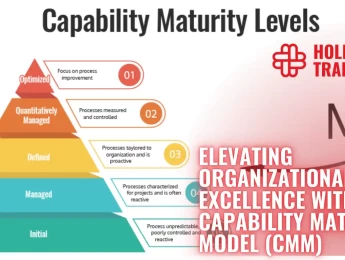- Table of Contents
- Introduction
- What Is Business Analysis?
- What Does a Business Analyst Do?
- Identifying Business Needs
- Analysing Requirements
- Developing Solutions
- Facilitating Communication
- Managing Requirements
- Performing Data Analysis
- Conducting Testing and Validation
- Supporting Implementation
- Continuous Improvement
- Why Is Business Analysis Important?
- Improved Efficiency
- Better Decision-Making
- Cost Reduction
- Enhanced Customer Satisfaction
- Risk Mitigation
- Strategic Alignment
- Facilitating Change Management
- Innovation and Competitive Advantage
- Difference Between Business Analysis and Business Analytics
- The 8 Steps of the Business Analysis Process
- 1. Initiation
- 2. Planning
- 3. Data Collection
- 4. Process Mapping
- 5. Data Analysis
- 6. Identifying Opportunities for Improvement
- 7. Generating the Solution
- 8. Designing the Future State
- Techniques of Business Analysis
- 1. CATWOE
- 2. MoSCoW
- 3. MOST
- 4. PESTLE
- 5. SWOT
- 6. Six Thinking Hats
- 7. The 5 Whys
- Global Standards of the Business Analysis Profession
- Is a Career in Business Analysis Worth It?
- Diverse Career Opportunities
- Impactful Work
- Continuous Learning and Development
- Competitive Salary and Benefits
- Professional Recognition and Advancement
- Flexibility and Work-Life Balance
- Contribution to Organisational Success
- Conclusion
Introduction
Business analysis is critical to modern organisational operations and essential for optimising processes, solving problems, and achieving strategic goals. This guide will delve into the nuances of business analysis, examining what it entails, the role of a business analyst, its importance, distinctions from business analytics, the business analysis process, various techniques, global standards, career prospects, and potential earnings.
What Is Business Analysis?
Business analysis is a disciplined approach to introducing and managing change in organisations, whether they are for-profit businesses, governments, or non-profits. It involves understanding organisational needs, assessing their impact, capturing, analysing, and documenting requirements, and supporting the communication and delivery of those requirements with relevant stakeholders. Essentially, business analysis bridges the gap between business problems and technological solutions, ensuring that organisations can adapt and thrive in their ever-changing environments.
What Does a Business Analyst Do?
A business analyst (BA) evaluates and analyses business processes, systems, and objectives to help organisations achieve their goals. The BA’s role encompasses a range of responsibilities:
Identifying Business Needs
One of the fundamental tasks of a business analyst is to identify the business needs and challenges within an organisation. This involves engaging with stakeholders at various levels to understand their requirements, pain points, and objectives. BAs use interviews, surveys, workshops, and observation techniques to gather detailed information. They must have excellent interpersonal skills to build relationships and gain trust, ensuring they can effectively elicit the necessary information.
Analysing Requirements
Once the business needs are identified, a business analyst analyses and prioritises these requirements. This analysis involves breaking down the requirements into smaller, manageable components and determining the feasibility and impact of each. BAs often use tools and techniques like case diagrams, user stories, and process flowcharts to document and communicate these requirements clearly and concisely. This ensures that all stakeholders have a shared understanding of what needs to be achieved.
Developing Solutions
After understanding and analysing the requirements, a business analyst's next step is to develop solutions that address the identified needs. This involves brainstorming and evaluating different approaches, considering cost, time, resources, and potential risks. BAs collaborate with cross-functional teams, including IT, operations, and marketing, to ensure the solutions are feasible and aligned with business goals. They often create prototypes, models, and business cases to present their recommendations.
Facilitating Communication
Effective communication is at the heart of a business analyst's role. BAs act as liaisons between business stakeholders and technical teams, ensuring that both sides clearly understand the requirements and proposed solutions. They facilitate meetings, workshops, and presentations to discuss project status, gather feedback, and resolve any issues. This ongoing communication helps keep projects on track and ensures all parties are aligned.
Managing Requirements
Another key responsibility of a business analyst is managing requirements throughout the project lifecycle. This involves tracking changes to requirements, assessing their impact, and ensuring that stakeholders document and approve all modifications. BAs use requirement management tools and methodologies to maintain an organized and up-to-date requirements record. This meticulous approach helps prevent scope creep and ensures that the final deliverables meet the business needs.
Performing Data Analysis
Business analysts frequently perform data analysis to support decision-making and validate solutions. They collect and analyse data from various sources to identify trends, patterns, and insights that inform business strategies. BAs use statistical tools, data visualisation techniques, and analytical software to interpret complex data sets. This data-driven approach helps organisations make informed decisions and measure the success of implemented solutions.
Conducting Testing and Validation
Before a solution is fully implemented, it must be thoroughly tested and validated to ensure it meets the business requirements. Business analysts create test plans, define test cases, and conduct user acceptance testing (UAT). They work closely with testing teams and end-users to identify any issues or gaps and ensure they are addressed before the solution goes live. This rigorous testing process helps ensure the final product is high quality and functions as intended.
Supporting Implementation
The role of a business analyst doesn’t end with developing a solution. BAs often support the implementation phase by providing training, documentation, and ongoing support to ensure a smooth transition. They help develop user manuals, training materials, and implementation guides to assist users in adapting to the new processes or systems. Additionally, they may monitor the implementation to ensure it delivers the expected benefits and identify any areas for further improvement.
Continuous Improvement
Business analysts are committed to continuous improvement and optimisation of business processes. They regularly review and assess implemented solutions' performance to ensure they meet business needs and adapt to changing conditions. This involves gathering stakeholder feedback, monitoring key performance indicators (KPIs), and identifying opportunities for further enhancements. By fostering a culture of continuous improvement, BAs help organisations remain agile and competitive.
KPI | Description | Measurement Method |
Requirements Accuracy | Accuracy of gathered requirements. | Percentage of requirements met |
Stakeholder Satisfaction | Satisfaction level of stakeholders with BA's work. | Surveys, feedback forms |
Project Timeliness | Ability to meet project deadlines. | Percentage of projects completed on time |
ROI Improvement | Impact of BA recommendations on ROI. | Percentage increase in ROI |
Process Efficiency | Efficiency gains achieved through process improvements. | Time or cost savings achieved |
Table 1: KPIs for Business Analysts
Why Is Business Analysis Important?
Business analysis is a pivotal practice in the modern corporate landscape, acting as a linchpin for organisational efficiency, strategic decision-making, and sustainable growth. Its importance cannot be overstated, as it encompasses various aspects that collectively enhance an organisation’s performance and adaptability. Here’s why business analysis is crucial for any organisation:
Improved Efficiency
Efficiency is the cornerstone of successful business operations. Business analysts play a crucial role in identifying inefficiencies within processes and systems. BAs can pinpoint bottlenecks and redundant activities that hamper productivity by analysing workflows, data, and organisational structures. They utilise process mapping and gap analysis techniques to visualise current processes and compare them with best practices or desired outcomes. The resulting insights help streamline operations, reduce waste, and optimise resource allocation, improving overall efficiency.
For instance, a manufacturing company might have a complex supply chain process with multiple handoffs and approvals. A business analyst can map out the entire process, identify unnecessary steps, and recommend automation or reengineering to speed up the process and reduce errors.
Better Decision-Making
In today’s data-driven world, making informed decisions is critical for organisational success. Business analysts are adept at interpreting complex data sets to extract meaningful insights. They employ various data analysis techniques to uncover trends, patterns, and anomalies that can influence strategic decisions. This analytical approach ensures that decisions are based on empirical evidence rather than intuition or guesswork.
For example, a retail company analysing customer purchase data might discover that certain products are more popular in specific regions. A business analyst can help the company make data-driven decisions about inventory management, marketing strategies, and sales tactics, improving profitability and customer satisfaction.
Cost Reduction
Cost management is a constant challenge for organisations. Business analysts contribute significantly to cost reduction by identifying and eliminating inefficiencies. They conduct cost-benefit analyses to evaluate the financial impact of proposed changes and recommend strategies to minimise expenses without compromising quality.
Consider a financial services firm facing high operational costs due to manual processes. A business analyst could recommend implementing an automated workflow system that reduces the need for manual intervention, thereby reducing labour costs and minimising errors that could lead to financial losses.
Enhanced Customer Satisfaction
Customer satisfaction is a key driver of business success. Business analysts ensure customers receive better and faster service by optimising processes and systems. They analyse customer feedback, service delivery times, and other relevant data to identify areas for improvement. This focus on continuous improvement helps organisations meet and exceed customer expectations.
For instance, an e-commerce company might receive frequent complaints about delayed deliveries. A business analyst can study the entire order fulfilment process, identify the root causes of delays, and propose solutions such as improved inventory management or partnerships with more reliable logistics providers. These changes can lead to faster deliveries and higher customer satisfaction.
Risk Mitigation
Every business faces risks, whether operational, financial, or strategic. Business analysts are crucial in identifying, assessing, and mitigating these risks. Through thorough analysis and modelling, they can foresee potential issues and develop strategies to prevent or minimise their impact.
For example, a healthcare provider looking to implement a new patient management system must understand potential risks, such as data breaches or system downtimes. A business analyst would conduct a risk assessment, considering factors like data security, user training, and system reliability, and propose measures to mitigate these risks, ensuring a smooth and secure implementation.
Strategic Alignment
Strategic alignment ensures that all business activities and projects align with the organisation’s overall goals and objectives. Business analysts help align initiatives with strategic priorities by translating high-level business goals into actionable projects and tasks. They ensure that each project contributes to the broader organisational strategy.
Imagine a tech company aiming to expand its product line to include smart home devices. A business analyst would help align this initiative with the company’s strategic goals by conducting market research, defining product requirements, and ensuring that the project plan supports the company’s vision for innovation and market leadership.
Facilitating Change Management
Change is inevitable in any organisation but can be challenging to manage. Business analysts facilitate smooth transitions by employing change management strategies. They help plan, implement, and monitor changes, ensuring all stakeholders are on board and minimising disruptions.
For example, when a large corporation migrates to a new enterprise resource planning (ERP) system, a business analyst would be pivotal in managing this change. They would assess the impact on various departments, develop a comprehensive implementation plan, communicate changes effectively to all stakeholders, and provide training and support to ensure a successful transition.
Innovation and Competitive Advantage
Innovation is critical for maintaining a competitive edge in today’s rapidly evolving market. Business analysts drive innovation by identifying new opportunities and enabling organisations to respond swiftly to market changes. They keep abreast of industry trends, emerging technologies, and competitive dynamics, providing valuable insights that help organisations innovate and stay ahead of the competition.
For instance, a business analyst in a telecommunications company might identify a growing trend in 5G technology and recommend investing in 5G infrastructure and services. This proactive approach positions the company as a leader in the market, attracting new customers and increasing market share.
In short, business analysis is indispensable for modern organisations aiming to thrive in a competitive and dynamic environment. By improving efficiency, enabling better decision-making, reducing costs, enhancing customer satisfaction, mitigating risks, ensuring strategic alignment, facilitating change, and fostering innovation, business analysis provides the foundation for sustainable growth and success. Business analysts drive meaningful change and add significant value to their organisations through their analytical skills, strategic thinking, and stakeholder engagement.
Difference Between Business Analysis and Business Analytics
While business analysis and business analytics are often used interchangeably, they are distinct disciplines:
- Business Analysis: Focuses on identifying business needs and determining solutions to business problems. It is more qualitative and process-oriented, involving requirements gathering, process modelling, and solution design.
- Business Analytics: Involves using statistical methods and technologies to analyse historical data and predict future trends. It is more quantitative, focusing on data mining, statistical analysis, and predictive modelling.
The 8 Steps of the Business Analysis Process
The business analysis process is a structured approach that ensures thorough understanding and effective problem-solving within an organisation. Following a systematic series of steps, business analysts can deliver solutions that meet business needs and drive strategic goals. Let's explore each of the eight steps in detail:
1. Initiation
The initiation phase is the starting point of the business analysis process. It involves defining the project scope and objectives, understanding the business context, and identifying key stakeholders. This step establishes a clear understanding of what needs to be achieved, setting the foundation for the entire analysis.
- Scope Definition: Clearly outline the project's boundaries, including what is in and what is out of scope. This helps prevent scope creep and ensures all efforts focus on the defined objectives.
- Objective Setting: Define the specific goals of the project. These objectives should be SMART (Specific, Measurable, Achievable, Relevant, Time-bound) to ensure clarity and focus.
- Stakeholder Identification: Identify all stakeholders who will be impacted by the project or are interested in its outcome. This includes internal stakeholders (employees, managers) and external stakeholders (customers, suppliers).
2. Planning
Planning is a crucial step that involves developing a detailed roadmap for the business analysis activities. It ensures that all necessary resources, timelines, and methodologies are in place to conduct the analysis effectively.
- Project Plan: Create a comprehensive project plan that outlines the tasks, timelines, and resources required for the analysis. This plan should include milestones and deliverables to track progress.
- Resource Allocation: Identify and allocate the necessary resources, including personnel, tools, and budget, to ensure the project's efficient execution.
- Methodology Selection: Based on the project's specific needs and context, choose the appropriate methodologies and techniques for data collection, analysis, and solution design.
3. Data Collection
Data collection is the process of gathering relevant information to inform the analysis. This step involves using various techniques to collect data from multiple sources, ensuring a comprehensive understanding of the current state.
- Interviews: Conduct interviews with stakeholders to gather qualitative data about processes, challenges, and requirements.
- Surveys and Questionnaires: Distribute surveys to collect quantitative data from a larger audience, ensuring diverse perspectives are captured.
- Document Analysis: Review existing documents, such as process maps, reports, and manuals, to gather background information and context.
- Observations: Observe processes in action to gain firsthand insights into workflows and identify areas for improvement.
4. Process Mapping
Process mapping involves creating visual representations of the current processes. This step helps understand how tasks are performed and identify inefficiencies or bottlenecks.
- Flowcharts: Develop flowcharts that depict the step-by-step sequence of activities within a process. These visual tools help identify redundancies and areas for improvement.
- Value Stream Mapping: Create value stream maps to visualise the flow of materials and information throughout the process, highlighting value-adding and non-value-adding activities.
- Swimlane Diagrams: Use swimlane diagrams to illustrate how different departments or roles interact within a process, identifying handoffs and potential delay points.
5. Data Analysis
Data analysis is where collected data is examined to uncover trends, patterns, and insights. This analysis informs the identification of problems and the development of solutions.
- Quantitative Analysis: Use statistical methods to analyse numerical data, identifying trends, averages, and outliers that inform decision-making.
- Qualitative Analysis: Analyse qualitative data from interviews and observations to identify common themes, challenges, and opportunities for improvement.
- Root Cause Analysis: Perform root cause analysis to determine the underlying causes of identified problems, using techniques such as the 5 Whys or Fishbone Diagrams.
6. Identifying Opportunities for Improvement
Based on the analysis, this step involves identifying areas for improvement. These could include process enhancements, technology upgrades, or changes in organisational structure.
- Problem Identification: Clearly define the problems that need to be addressed, supported by data and analysis.
- Opportunity Assessment: Evaluate the potential impact of addressing each problem, considering cost, feasibility, and benefits.
- Prioritisation: Prioritise the identified opportunities based on their potential impact and the organisation’s strategic goals.
7. Generating the Solution
Once opportunities for improvement are identified, the next step is to generate and evaluate potential solutions. This involves brainstorming, developing prototypes, and conducting feasibility studies.
- Brainstorming: Facilitate brainstorming sessions with stakeholders to generate various potential solutions.
- Feasibility Analysis: Assess the feasibility of each solution in terms of cost, time, resources, and alignment with business goals.
- Prototyping: Develop prototypes or mock-ups of the proposed solutions to test their viability and gather stakeholder feedback.
8. Designing the Future State
The final step involves designing and documenting the future state processes and systems. This ensures that the proposed solutions are well-defined and ready for implementation.
- Future State Process Maps: Create detailed process maps for the future state, outlining how tasks will be performed after the improvements are implemented.
- Implementation Plan: Develop a comprehensive implementation plan outlining the steps, timelines, and resources required to transition from the current state to the future.
- Change Management Plan: Prepare a change management plan to ensure the smooth adoption of the new processes and systems. This plan should include communication strategies, training programs, and support mechanisms.
- Documentation: Document all aspects of the future state, including process descriptions, system specifications, and roles and responsibilities. This ensures clarity and provides a reference for future maintenance and improvements.
The business analysis process is a structured and methodical approach that enables organisations to understand their current state, identify areas for improvement, and design effective solutions. By following these eight steps—initiation, planning, data collection, process mapping, data analysis, identifying opportunities for improvement, generating the solution, and designing the future state—business analysts can ensure that their efforts are comprehensive, aligned with strategic goals, and capable of driving meaningful change. This systematic process enhances operational efficiency and decision-making and positions organisations for long-term success and sustainability.
Techniques of Business Analysis
Several techniques are employed in business analysis to ensure comprehensive and effective outcomes:
Business analysis encompasses a variety of techniques designed to gather, analyse, and interpret data, understand business needs, and develop effective solutions. These techniques provide structured approaches to solving problems and making informed decisions. Here’s an in-depth look at some of the most commonly used techniques in business analysis:
1. CATWOE
CATWOE is a problem-solving technique that helps business analysts understand and evaluate problems from multiple perspectives. The acronym stands for Customers, Actors, Transformation process, Worldview, Owner, and Environmental constraints.
- Customers: Identify who benefits from the process or system and who is affected by its outcomes. Understanding customer needs and expectations is crucial for designing effective solutions.
- Actors: Determine who is involved in the process, including those who perform the activities and those who interact with the system.
- Transformation process: Define what the process does, how inputs are transformed into outputs, and what changes occur.
- Worldview: Consider the bigger picture and how the process fits within the broader organisational context and objectives.
- Owner: Identify who has ownership and accountability for the process and who can authorise changes.
- Environmental constraints: Recognize external factors and constraints that affect the process, such as regulations, market conditions, and technological limitations.
Using CATWOE helps ensure a comprehensive understanding of the problem and facilitates the development of holistic solutions that address all relevant aspects.
2. MoSCoW
The MoSCoW prioritisation technique categorises requirements into four groups: Must have, Should have, Could have, and Won’t have. This helps stakeholders focus on the most critical requirements and make informed decisions about trade-offs.
- Must have: Essential requirements that are critical for the project’s success. Without these, the project would fail.
- Should have: Important requirements that are not critical but add significant value. They should be included if possible but can be deferred if necessary.
- Could have: Desirable requirements that are not essential and can be included if time and resources permit.
- Won’t have: Requirements that are agreed to be out of scope for the current project but may be considered for future phases.
MoSCoW prioritisation helps manage stakeholder expectations and ensures project efforts focus on delivering the most important features first.
3. MOST
MOST analysis is a strategic planning tool that helps align business activities with the organisation’s overall mission and objectives. The acronym stands for Mission, Objectives, Strategy, and Tactics.
- Mission: Define the organisation’s core purpose and long-term vision. This sets the foundation for strategic planning.
- Objectives: Identify specific, measurable goals that the organisation aims to achieve in support of its mission.
- Strategy: Develop high-level approaches and plans to achieve the objectives. This includes determining the direction and scope of activities.
- Tactics: Outline detailed actions and steps required to implement the strategy and achieve the objectives.
MOST analysis ensures that all business activities are aligned with the organisation’s strategic goals and provides a clear roadmap for achieving them.
4. PESTLE
PESTLE analysis is an environmental scanning tool that examines external factors affecting the organisation. The acronym stands for Political, Economic, Social, Technological, Legal, and Environmental factors.
- Political: Assess the impact of government policies, regulations, and political stability on the organisation.
- Economic: Evaluate economic conditions, such as inflation, exchange rates, and economic growth, that influence business operations.
- Social: Consider societal trends, demographics, and cultural factors that affect customer behaviour and market demand.
- Technological: Analyse technological advancements and innovations that can create opportunities or pose threats to the organisation.
- Legal: Review legal and regulatory requirements that the organisation must comply with.
- Environmental: Examine environmental factors, such as climate change and sustainability concerns, that impact the business.
PESTLE analysis provides a comprehensive understanding of the external environment, helping organisations anticipate changes and develop adaptation strategies.
5. SWOT
SWOT analysis is a strategic planning tool for identifying an organisation’s Strengths, Weaknesses, Opportunities, and Threats. It provides a clear picture of the internal and external factors that influence business performance.
- Strengths: Identify internal attributes and resources that give the organisation a competitive advantage.
- Weaknesses: Recognize internal limitations and areas that need improvement.
- Opportunities: Explore external factors and trends the organisation can capitalise on to grow and succeed.
- Threats: Identify external challenges and risks that could negatively impact the organisation.
SWOT analysis helps organisations leverage their strengths, address weaknesses, exploit opportunities, and mitigate threats, leading to informed strategic decision-making.
6. Six Thinking Hats
Six Thinking Hats is a technique that promotes parallel thinking and helps teams explore problems from different perspectives. Each "hat" represents a distinct mode of thinking:
- White Hat: Focuses on facts, data, and information.
- Red Hat: Considers emotions, feelings, and intuition.
- Black Hat: Identifies potential problems, risks, and negative outcomes.
- Yellow Hat: Explores positive aspects, benefits, and optimistic viewpoints.
- Green Hat: Encourages creativity, innovation, and new ideas.
- Blue Hat: Manages the thinking process, ensures structure, and facilitates discussions.
By wearing different hats, teams can approach problems holistically and develop well-rounded solutions.
7. The 5 Whys
The 5 Whys technique is a simple yet powerful tool for root cause analysis. It involves asking "why" repeatedly (typically five times) to drill down into the underlying cause of a problem.
- First Why: Identify the immediate cause of the problem.
- Second Why: Determine why the immediate cause occurred.
- Third Why: Explore the reasons behind the second cause.
- Fourth Why: Investigate the deeper causes behind the third why.
- Fifth Why: Uncover the root cause that led to the problem.
The 5 Whys technique helps identify the fundamental issues that must be addressed to prevent recurrence, leading to more effective and lasting solutions.
In summary, business analysis techniques are essential tools that enable business analysts to understand complex problems, gather and analyse data, and develop effective solutions. Techniques like CATWOE, MoSCoW, MOST, PESTLE, SWOT, Six Thinking Hats, and The 5 Whys provide structured approaches to problem-solving and decision-making. By employing these techniques, business analysts can ensure that their analyses are comprehensive, their solutions are well-informed, and their recommendations drive meaningful organisational improvements. These techniques not only enhance the quality and effectiveness of business analysis but also contribute to the overall success and competitiveness of the organisation.
Global Standards of the Business Analysis Profession
The business analysis profession adheres to several global standards to ensure industry consistency, quality, and professionalism. These standards are set by leading professional organisations and include best practices, methodologies, and certifications that guide business analysts in their work.
One of the foremost organisations that has set these standards is the International Institute of Business Analysis (IIBA). The IIBA provides the Business Analysis Body of Knowledge (BABOK), a comprehensive guide that outlines the skills, knowledge areas, and techniques necessary for effective business analysis. BABOK is widely recognised and used as a foundational resource for business analysts worldwide.
Certifications are a key component of the global standards in business analysis. They validate the skills and knowledge of business analysts, assuring employers and clients about the analyst's expertise. Some of the most respected certifications include:
- Certified Business Analysis Professional (CBAP): The IIBA offers this certification to experienced business analysts who have demonstrated their ability to lead and perform high-level business analysis work.
- Certification of Capability in Business Analysis (CCBA): Also provided by the IIBA, this certification is designed for practitioners who understand and have applied business analysis principles in their work.
- Entry Certificate in Business Analysis (ECBA): This certification, again from the IIBA, is targeted at new individuals and provides foundational business analysis knowledge.
- PMI Professional in Business Analysis (PMI-PBA): Offered by the Project Management Institute (PMI), this certification recognises professionals in business analysis and project management, emphasising the integration of both disciplines.
Adhering to these global standards ensures that business analysts maintain high competency and professionalism. These certifications often require ongoing education and recertification, ensuring that professionals stay current with evolving practices and technologies in the field.
Standards and certifications also facilitate global mobility and career advancement for business analysts. Professionals with recognised certifications can more easily find opportunities in different regions and industries, as their credentials are understood and valued internationally. This standardisation helps create a cohesive professional community and fosters best practices across the globe.
Overall, the global standards of the business analysis profession are critical in maintaining the integrity, quality, and effectiveness of business analysis work. They provide a framework that guides practitioners, ensures consistent application of methodologies, and promotes continuous improvement in the field.
Is a Career in Business Analysis Worth It?
Choosing a career in business analysis can be highly rewarding for various reasons. A business analyst (BA) is crucial in today's dynamic business environment, as organisations continually seek ways to improve efficiency, innovate, and stay competitive. Here are several compelling reasons why a career in business analysis is worth considering:
Diverse Career Opportunities
Business analysis skills are in demand across numerous industries, including finance, healthcare, information technology, manufacturing, and retail. This versatility allows business analysts to explore various sectors and roles, from process improvement and project management to strategic planning and IT systems analysis. The ability to transfer skills across industries provides job security and numerous opportunities for career growth and diversification.
Impactful Work
Business analysts play a vital role in solving complex business problems, improving processes, and driving strategic initiatives. Their work directly influences organisational performance and success. For those who enjoy problem-solving and making a tangible impact, a career in business analysis offers the satisfaction of seeing their recommendations implemented and yielding positive results.
Continuous Learning and Development
The field of business analysis is dynamic and constantly evolving, driven by technological advancements and changing business needs. This environment encourages continuous learning and professional development. Business analysts often engage in ongoing education, certifications, and training to stay current with best practices and emerging trends. This commitment to growth enhances their skills and keeps the work interesting and challenging.
Competitive Salary and Benefits
Business analysts are well-compensated for their expertise and contributions. Salaries for BAs are competitive and often come with comprehensive benefits packages. According to industry reports, business analysts earn attractive salaries that increase with experience, advanced certifications, and specialisation in high-demand areas like data analysis or IT systems. The average salary of a business analyst in the USA, according to Indeed, is $5,969 per month.
Professional Recognition and Advancement
Achieving certifications such as CBAP, PMI-PBA, or other recognised credentials enhances a business analyst’s credibility and marketability. These certifications demonstrate a commitment to the profession and adherence to global standards, which can lead to career advancement and leadership opportunities. Certified business analysts are often preferred for senior roles and consulting positions, where they can influence strategic decisions and drive organisational change.
Flexibility and Work-Life Balance
Many business analyst roles offer flexibility in terms of work hours and locations. With the rise of remote work and digital collaboration tools, business analysts can often work from various locations, providing a better work-life balance. This flexibility particularly appeals to professionals seeking to balance their career aspirations with personal commitments.
Contribution to Organisational Success
Business analysts are essential in helping organisations navigate change, optimise performance, and capitalise on opportunities. Their ability to bridge the gap between business needs and technical solutions makes them invaluable assets to any company. Business analysts contribute significantly to their organisations' overall success and sustainability by aligning projects with strategic goals and improving operational efficiency.
A business analysis career is worth it for those passionate about problem-solving, continuous learning, and making a meaningful impact on business outcomes. The diverse opportunities, competitive salaries, professional recognition, and potential for career advancement make business analysis an attractive and fulfilling career path. As businesses continue to face complex challenges and seek innovative solutions, the demand for skilled business analysts is expected to grow, ensuring a bright and promising future for professionals in this field.
Conclusion
Business analysis is a vital discipline that helps organisations navigate complex challenges and achieve their strategic goals. Business analysts play a crucial role in driving efficiency, innovation, and success by understanding business needs, analysing data, and designing effective solutions. With a structured process, various analytical techniques, and adherence to global standards, business analysis remains a rewarding and impactful career choice, offering both professional growth and competitive salaries. Whether you're considering a career in this field or looking to enhance your organisation's operations, the principles and practices of business analysis are indispensable tools for success. If you want to master essential business analysis skills and techniques, consider enrolling in our comprehensive course, "Business Analysis Skills and Techniques." Gain hands-on experience, learn from industry experts, and take your career to new heights in the dynamic world of business analysis.

























